The Science of Meditation by Prem Nirmal

The Science of Meditation by Prem Nirmal
1) What is Meditation?
Meditation is the freedom from thought, a state of no-mind. It is a state of pure consciousness with no contents. It is the activation of natural ‘seeing’ activity, of the ‘Self’ or Consciousness. It is the finest way to increase one’s personal energy by getting connected to the Source.
Meditation is a key to unlock the mystery of existence. It is a method par excellence, to go into altered states of consciousness, wherein it is possible to perceive alternate frequency universes, which are all simultaneously co-existing.
Meditation is easy and not at all difficult. It is a knack, which can be mastered with the help of regular practice.
Meditation begins basically with “Anapanasati”, which means to keep one’s total attention and awareness only on one’s normal breathing process. In Pali language, in which Buddha talked, ‘Ana’ means ‘In-breath’, ‘Apana’ means ‘Out-breath’, ‘Sati’ means ‘To be one with’. Meditation is neither ‘prayer’, nor ‘chanting’ nor ‘contemplation’. No ‘mantra’ is to be chanted, no form of ‘deity’ or outside ‘Guru’ is to be entertained, nor any ‘pranayama’ practice like holding one’s breath i.e. ‘kumbhaka’ should be attempted during meditation.
2) Why to Meditate?
Meditation takes you…
From Tension to Attention
From Stressfulness to Gracefulness
From Illness to Health
From Fearfulness to Fearlessness
From Dullness to Sharpness
From Rigidity to Flexibility
From Discontentment to Contentment
From Restlessness to Tranquility
From Complexity to Simplicity
From Fragmentation to Integrity
From Separatism to Unity
From Vanity to Sanity
From Warfare to Lovefare
From Ownership to Trusteeship
From Loneliness to Aloneness (All-Oneness)
From Misery to Bliss From Bondage to Liberation
From Indifference to Compassion
From Self-importance to Self-less-ness
From Competition to Co-operation
In short, from Disorderliness to Orderliness in every walk of life!
ALL THIS JUST FROM SIMPLE MEDITATION!
3) When And How of Meditation
Meditation should be undertaken regularly and for a minimum of twenty minutes to one hour every day. Time can be increased further as you proceed.
Meditation at the same time of the day and at the same place is good to begin with. As you start understanding that it is the inner state that is important, any time and any place is okay for meditation.
Meditation can be done in any comfortable sitting posture, keeping the spine erect, as far as possible. Legs crossed or folded, hands should be clasped and eyes to be closed. This helps in harnessing the energy within by avoiding the drainage or the outward flow of energy.
Routine wanderings of the mind should be cut right away, as and when they arise, and attention should constantly be brought back to the chosen work at hand, i.e. consciously observing the breath.
Instead of thinking too much about how to start and when to start, simply observe your breath and you have begun your journey in meditation!
4) What Are the Different Stages to the State of Meditation?
Meditation means to be in thoughtless state with full awareness. Just for the purpose of preliminary understanding, various progressive stages of meditation can be seen as:
You begin with conscious observance of natural breathing process. This is known as “Anapanasati”. (Controlling or manipulation of breathing process is not necessary.) In case of thought taking away your attention from breathing process, come back to observing breath without fighting with thought.
In the next stage include your heartbeats in your awareness along with breathing process. This is two-point awareness. Next bring about the awareness of entire body along with breathing process. This is known as “Kayanupassana”. Here you are aware of every happening inside your body.
In the next stage increase your awareness further to include all the sounds of outer as well as inner world. Let your awareness become more intense and broader as well. Let it grow to multi-point awareness, meaning – being conscious of many aspects “at a time”. e.g. You are conscious of your breath, your heartbeats, your body sensations, various sounds inside as well as outside. You are also aware of the air touching your skin, various fragrances in the room etc. By just being rooted into this state, the third eye opens on its own accord and you start seeing the things directly. This is known as “Vipassana”, the “Special Seeing”. Many Meditators have reported various experiences of this stage, known as third eye experiences.
With witnessing of thoughts and further sharpening of this awareness, getting rooted into no-thought state becomes easy. With this the energy reservoir builds up, as there is no dissipation of energy by thought mind. Just by staying more and more into this state, the energy build up goes to peak and it falls back upon itself. This is the enlightenment experience, the awareness becoming aware of itself. With this multi-dimensional awareness becomes possible and you can see various frequency universes (Etheric, Astral, Causal etc.) which are all simultaneously co-existing, with your ‘poly-vision’. This brings about the understanding of various different frequency universes, gross, subtler as well as subtlest. You understand all these ‘consensus realities’ as temporary illusive phenomena and discard all these experiences of the past and remain rooted totally in the present moment. This is “Nibbanna” or Nirvana, the desire-less state.
Higher the intensity, less is the time required to progress in meditation.
5) What Meditation is not!
Chanting of any Mantra, Stotras, Naam-smaran or Japa may help some people to quieten their mind and bring it to one point of concentration, but it is not meditation.
Concentration on any one point like trataka is not Meditation.
Contemplation on any one thought or an idea is not meditation.
Idol worship (Murti pooja) – Offering of prayers in various forms is not meditation.
Twisting and turning the body in various postures or Asanas may be good for the suppleness of the body but it is not meditation.
Bio-energy exercises, Pranayama, holding of breath – kumbhaka- or manipulation of breath in any form may be useful for increasing vitality levels of cellular body but it is not meditation.
Guided relaxation processes and creative visualizations may be helpful in relaxing the mind in the beginning but it is not meditation.
Listening to good instrumental / classical music, as a tool, can be a good help in preparation for meditation to begin with but ‘musical-entertainment’ is not meditation.
Singing ‘Bhajans’ – devotional songs – is not meditation, but as a natural and spontaneous outcome of meditative experience, bliss is some times expressed with devotional songs.
It has been noticed that people spend lot of time in ‘preparation for meditation’ and are left with no time for actual ‘Meditation’. Masters suggested many aspects mentioned above to the beginners as a good help in the preparatory stages of sadhana. But what has happened is that more and more people cling to the preparatory stages and get stuck there and do not proceed further on the path. The purpose of segregating real meditation from the preparatory stages is to help seekers to come to the real journey and progress on the path faster.
6) Do You Ever Meditate?
You fix up time, regular and punctual
And you plan to meditate.
You take a bath, become clean and fresh,
And you get ready to meditate.
You select a corner dark and cool
And you desire to meditate.
You prepare the seat – soft & clean
And you wish to meditate.
You bring the flowers fresh and fragrant
And you decide to meditate.
You burn incense and rich perfumes
And you aspire to meditate.
You sit in Asana, straight and still,
And you try to meditate.
You chant, breathe and concentrate,
And you think you meditate.
And with all these preparations and plans of mind,
Do you ever become free from thought to meditate?
Do You Ever Meditate?
7) Group Meditation & Outside dependency
Group Meditations are useful to motivate each other and to share the group energy to begin with; but ultimately meditation is a ‘solo inward journey’ and all sorts of outside dependencies need to be discarded to find the Source within.
By outside dependencies we mean… >> Listening to instrumental music like Santoor, Flute etc. >> Music/ Dance/ Catharsis in any form. >> Guiding instructions – direct or from cassettes. >> Use of any special techniques for meditation with or without the help of various structures or toys such as Pyramids, Pendulums, Crystals, Pagodas, Candles, Bells, Books, CDs, cassettes etc.
Use of tools, toys and techniques is like using the boat to cross the river. Use it if it helps you, cross the river and jump out of the boat onto the shore of meditation. Come out of the boat and be grateful to it. The problem comes when you get stuck with the boat and are not ready to jump out of it. If you carry the boat on your head and go on glamorizing about it on loudspeakers to impress upon various groups, insisting that every body must use your boat only, it creates problems. This kind of attitude creates hurdles in your further journey. Becoming disciple or follower of people who pose themselves as ‘GURU’ and make you dependent on them and their toys and techniques, cassettes and kriyas is equally dangerous. Real meditation awakens the INNER GURU leading to the ultimate freedom and that is the end of all outside dependencies.
8) What Are the Outcomes of Preparatory Stages of Meditation?
Thousands of systematic experiments in the field of scientific spirituality are carried out by various groups, seekers and scientists, in different parts of the world. Following are the common outcomes reported by people practicing the preparatory stages of meditation. You can experience it for yourself by experimenting.
Changes found in work -environment and at personal level are…
1) Stress levels are reduced drastically.
2) Personal effectiveness enhances.
3) Quality and Productivity levels at work are improved.
4) With ‘awareness of the moment’, Time management is better taken care of.
5) ‘Learning ability’ is enhanced drastically.
6) Memory power is increased.
7) Wasteful habits die a natural death.
8) Ability to see ‘Right’ and ‘Wrong’ increases drastically.
9) Sleep time requirement gets decreased.
10) Helps to maintain positive attitude towards life.
11) Interpersonal relationships become more qualitative and fulfilling.
12) Understanding human behaviors in every situation becomes easier.
13) Healing of body-mind happens naturally and enhances health at all levels.
14) Peaceful and Joyous state of mind stays for longer duration.
15) Increased levels of patience, forgiveness, quietude and happiness.
People diving deep in meditation have reported following…
1) Intuition starts functioning better.
2) Third eye activation happens over a period of time, leading to seeing of ‘Aura’ with naked eyes.
3) Ability to ‘Astral Project’ or ‘Astral Travel’.
4) Contact with Angel guides, Higher-Self and other astral masters takes place to take personal messages and guidance.
5) Glimpses of the past lives, realizing the past mistakes and learning through them becomes easier.
6) Realizing the effects of past karmas helps to sort out the problems in present relationships.
7) The purpose of life is better understood.
8) Finally, Enlightenment / Nirvana / Buddhahood is tasted.
9) Meditation Experiences
Please remember: All the experiences are just the passing phases on the journey towards meditation. It is not real meditation! You are neither the experience nor the experiencer. You are the one who is witness to all experiences.
Various Experiences at Physical Level
1) Headache or pain in any part of the body. (This is very common. We receive cosmic energy in meditation, which cleanses the sick part of the body, and this causes pain. This pain is felt only when one is in meditation.)
2) Body becomes very light or very heavy.
3) Body feeling very cold or it may perspire.
4) Hearing clearly the beating of one’s own heart from inside.
5) Feeling of hot gases going out of ears.
6) Body going into various yogic postures / movements.
7) Experiencing sudden laughter or crying.
8) Body sways front to back or sidewise or whirling sensations are felt even when the physical body is steady. (This is because of the astral body trying to separate from physical.)
9) Feeling that something has gone out of our body and being afraid of it. (Fear is common and there is no need to specially worry about such fears. Better way to handle fear is to face it squarely as and when it arises. By doing so it will rise to its peak and then it will subside.)
10) Feeling sleepy / drowsy. (It is not ‘sleep’, a thought-free state of mind gives such a feeling in the beginning.)
Hearing/ Smelling Experiences
1) Hearing voices, words or messages.
2) Hearing sounds or musical notes.
3) Becoming aware of various fragrances around.
4) Hearing one’s own snoring very clearly.(Means you are aware of your relaxed body sleeping)
Various Energy Experiences
1) Feeling that the body has become very small.
2) Feeling that the body has expanded greatly and has become gigantic.
3) Losing bodily awareness of joining of the hands.
4) Losing awareness of time spent in meditation.
5) Flying like a bird or an airplane. (Astral travel)
6) Feeling that you are meditating at new places.
7) Feeling upward creeping movement from the base of the backbone. (Awakening of kundalini)
8) Feeling of being healed of illness.
9) A deep contentment, great peace and bliss dawns upon a person.
Seeing or Light Experiences
1) Total darkness, brilliant light or various colors are seen even with closed eyes.
2) Seeing of terrifying images (Masters give the experiences to drive away fear complexes)
3) Seeing of snakes in astral visions.
4) Seeing and experiencing being moving at a fast pace in a dark tunnel opening into bright light. (Classically called ‘Tunnel Experience’)
5) Seeing friends and relatives who are alive or departed.
6) Seeing dead friends and relatives. (Comfort them; Suggest to them to seek assistance from Enlightened Souls and to move on to upper worlds)
7) Seeing astral masters / Gods. (Request them to give knowledge. Listen to their messages.)
8) Seeing hills and forest. (as a part of astral journey)
9) Seeing books and pen (Suggestion to try auto writing)
10) Following a “Jyoti” or “Light”. (Means following masters. Follow the Masters wherever they take you)
11) Seeing all types of “Visions”, the snap-shots of future events.
12) Visions of the past lives and Seeing / realizing past mistakes.
These experiences, one may encounter on the way to meditative state. But till these are experienced, the meditative state has not been reached! Only on transcendence of all or any such experiences, the meditation happens!
10) Subtler Hindrances to the Deeper Inner Journey
1) Various third eye experiences / Astral body experiences / Cosmic body experiences (Body expansions etc.), even though indicative of some progress on the path, are just the passing phase of meditation. All experiences are always of the ‘Bodies’, however subtle it may be. It is better to go through these experiences whole-heartedly with total awareness and discard them to go beyond. Hanging onto the memory of past experiences and expecting more such experiences in future are the biggest hurdles to get rooted in the present moment.
2) Sharing of meditation experiences with like-minded Meditator friends, if the need be, is okay, but glamorizing of these experiences should be avoided. At the later stage it is understood that ‘Verbalization’ is an attempt of ‘thought’ trying to express the experience of ‘thought-less’ dimension. Perfect verbalization of deeper level meditation experiences is not easy and the very attempt of verbalizing may lead to losing the essence of it.
3) With diving deep into meditation on regular basis, one may become capable of having control over various subtle forces, traditionally known as ‘Sidhhies’, e.g. capacity to make body very small or big or heavy or light or transparent, ability to teleport objects, mind reading, levitation, flying with physical body (Aakash-gamana), entering into other body at will (Parkaya-pravesh), capacity of wish fulfillment etc. They are a kind of temptations on the way. A meditator, if not aware of this aspect, may get caught into it very easily and may get stuck with it, forgetting completely the real journey, which is towards enlightenment. There is nothing wrong in knowing the ‘Science of Sidhhies’ as it comes and going beyond, but it is definitely not desirable to show-off these powers to public as it may result into ego enhancement and ultimately getting stuck with it. It is important to know such subtler hindrances and better to avoid them. It is also possible that a meditator may not encounter any of these powers and continue the inward journey without any problem. Always remember that the ultimate aim of meditation is to come to the state of ‘Nirvana’ (Nir – vana means No – desires) or ‘desire-less state’.
11) Meditation
Meditation… Meditation…
It is not the focussing of attention.
Nor is it narrowing of Consciousness,
It is not the thought in its exclusion
Meditation… Meditation…
It is not the glorified experience
Nor is it a flight of wishful will
It is not an enforced silence!
What is true Meditation?
It’s a perception of mind’s entire movement,
An aloof attention in the present,
Witnessing without any one witnessing
A Total Experience of the Moment!
Meditation… Meditation…
A transparent flow of Internal Energy,
Without any hindrance or deception,
With tranquillity and clarity.
Meditation… Meditation…
An experience of Enormous,
A moment of total fulfillment,
A creative timeless Existence,
That is true Meditation;
that is true Meditation!
(Poem by Sri Dada Gavand)
12) Witnessing: The Essence of Meditation

Once you start meditating, you will find that observing breath and body sensations is easy. Now it is possible to acknowledge the continuously chattering mind with its unceasing Self-dialogue. See the pictorial representation of this state of thought-mind in diagram-1. From here onward moving towards thoughtless state becomes possible with witnessing of thoughts. Witnessing means aloof observation of thoughts. Thought flow is like flowing river. We need to jump out of this river of thoughts and observe the flow by establishing ourselves on the riverbank.
Witnessing is a knack that happens within… initially it is a ‘thought’ that is trying to observe other thoughts. When you give a challenge to that ‘thought’ trying to observe two other thoughts at a time, you will find that a ‘thought’ is not capable of doing that. With such a challenge, the witness is created for the first time. As you start witnessing the thoughts as they arise in your inner sky, the thought flow becomes streamlined. (Diagram- 2)
As you start witnessing more and more, the thought flow starts reducing and they fall in line, with minimum traffic of thoughts. (Diagram-3) As intensity of aloof observation goes on increasing, it becomes possible to see the beginning of a thought, the middle of the thought and the end of the thought as you trace the whole trajectory of a thought with your aloof observation. With this you notice the gap between the two thoughts. (Diagram- 4)
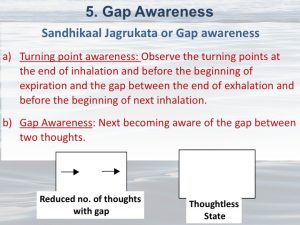
As you continue witnessing with higher intensity, the gap goes on increasing.
As the intensity of aloof observation goes to a peak, it becomes possible to get rooted into the vibrant silence of thoughtless state. (Diagram- 5). Just to be in this state without any expectations is the prelude to the new dimensional quantum jump called enlightenment.!
13) Meditation alone is not enough…
It may be true that only a meditator can become enlightened, but only meditation is not enough for enlightenment. Meditation needs to be supplemented with intense ‘Swadhyaya’ the ‘self-study’ to develop the intense and clear “UNDERSTANDING” of how the mind functions and governs the behavioral patterns. Without ‘Swadhyaya’, the ultimate flowering of medita-tion in this new kind of understanding is very difficult.
‘Satjana-sangatya’, to be in the company of enlightened masters – makes it easier to come to that understanding faster. It is not just the words of the master but the ener-gy field of the master that is felt in his presence, can throw a person into meditative awareness and masters’ wisdom helps to develop the ultimate understanding.
Meditation alone makes a person fit for ‘Swadhyaya’ and ‘Satjana-sangatya’ while ‘Swadhyaya’ and ‘Satjana-sangatya’ can save the meditator from the temptations of the senses and falling back into the old patterns of the mind. Meditation, ‘Swadhyaya’ and ‘Satjana-sangatya’ together prepare the person for ‘Satsang’. ‘Satsang’ is not ‘socializing’ with spiritual circles! ‘Satsang’ means to be with Truth, which is within oneself, in each one of us. This is the awakening of INNER GURU, the ultimate flowering of meditation.
14) What is Enlightenment?
Enlightenment means…
1) Never to be in hurry, never to be in worry & never to waste a single moment.
2) Ever to live in the Present and to think of the past or of the future only when absolutely warranted.
3) To know that the source of all wisdom is “MEDITATION” and nothing else.
4) Never to lament, never to regret. It is to understand deeply that every regret is a fresh blunder.
5) To flow with one’s own nature and let others flow freely in their own respective natures.
6) Continuous, hearty, wholesome laughter, mostly at one’s own self.
Enlightenment is the ability to…
1) Learn both from the superiors and from the inferiors, both from the wise and from the stupid.
2) Listen attentively with no other thought process crossing the mind.
3) To sit silently in front of a master.
4) Never to repress one’s emotions.
5) Bear infinite pain & infinite insult – without so much as raising an eyebrow.
6) To act impeccably always in every given moment and according to the given situation.
7) Freely mix with others without losing one’s own self-confidence or uniqueness.
Enlightenment is …
1) Love; and Love is rather an abstract feeling of tenderness towards all cosmic beings.
2) Losing utterly one’s self-importance, reducing oneself to zero.
3) Never to indulge in judging others.
4) To find out what you want most to do and then going and doing it.
5) To know the purpose of one’s life and its mission to act accordingly in every moment.
6) The art of ever maintaining inner silence in the midst of all the cacophony that is existing in the world.
7) To live in the society but to see that the society does not live in you.
8) To be always in a state of recklessness… fearlessness… dare-devilness.
9) Never to form routines.
10) To totally eschew “One Guru” concept.
11) Ever to immerse oneself in the immediate task of the immediate moment.
Enlightenment is to understand that…
1) You create your own reality; your beliefs form your experiences.
2) Nothing is by chance, but everything is by choice.
3) The only subject to be studied is Spiritual Science.
4) Everybody’s potential is infinite.
5) YOU are all that is.
6) You are your Guru.
7)You can never be totally enlightened.
8) What you see at any given time is only a part of the truth, only one dimension of it.
9) You can never give enlightenment to others and nobody can give enlightenment to you.
10) There is good and there is bad” and “there is no good and there is no bad.
11) Samsara is Nirvana.
12) Time is the greatest Illusion.
13) Basically there are no rules and regulations for conduct – all life is fundamentally a free exploration of its own likes and dislikes.
14) You are born here primarily for your own growth and for your own development.
“Before Enlightenment chopping wood carrying water.
After Enlightenment chopping wood carrying water.
– Zen Proverb.

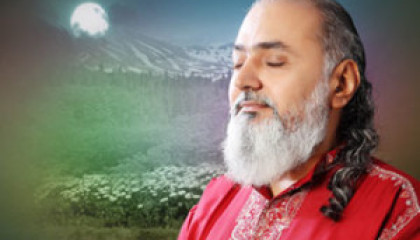
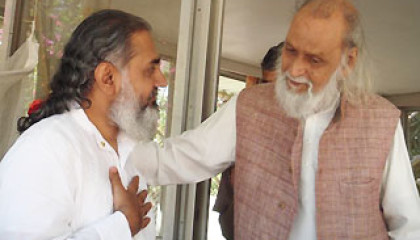
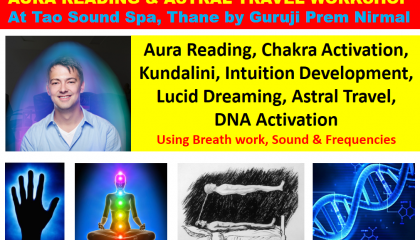
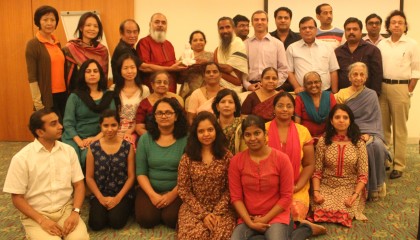
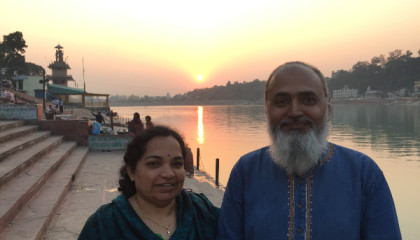
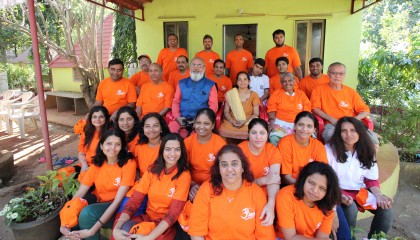
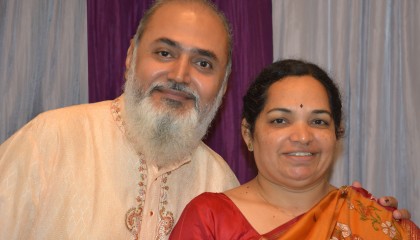





Reply
You must be logged in to post a comment.